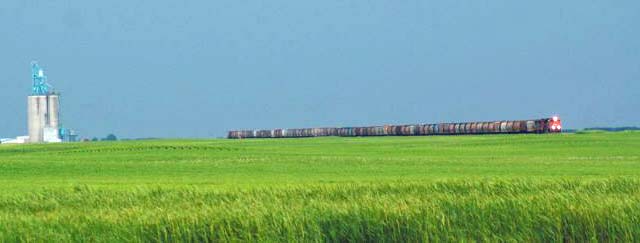

Canada - Canadian railways say extended interswitching is detrimental to their operations and should be eliminated.
Representatives told the federal transportation committee meeting on the Fair Rail for Grain Farmers Act last week that they aren't adequately compensated for
moving cars beyond the 30 kilometre regular zone to a competitor's rail line as much as 160 kilometres away.
They are also seeing loss of traffic to U.S. railroads, which can use the provision without reciprocal terms.
Extended interswitching hurts the entire rail sector but is particularly harmful to shortlines, said Michael Bourque, chief executive officer of the Railway
Association of Canada.
"Over time, the resulting effect will be a slow and steady decline of shortline railways in Canada," he said.
"We believe that the provisions should be allowed to sunset."
He said shortlines own 20 percent of the rail network and their private track competes directly with trucks on publicly funded roads.
He also said the vast majority of interswitching occurs between the Class 1 railroads, Canadian National Railway and Canadian Pacific Railway, and the
regulated rate formula uses their costs.
"This is a fundamental flaw in the methodology as it does not align with shortline railways' unique cost structure," he said.
"Rates under the interswitching provisions are not compensatory for shortline railways."
Perry Pellerin, chair of the Saskatchewan Shortline Association, said interswitching could work but not in its current form.
He said shortlines become a less attractive option if it costs too much to move cars to them.
"It would be ideal for shortlines to have interswitching regulations apply to us or not have the regulation at all," he said.
When asked how interswitching regulations could be changed to help compensate shortlines, Bourque said it would be better to move to a commercial
system.
Shortlines already operate within a highly regulated environment.
"The fact those rates are not compensatory today indicates that the system will never keep up with the market, so you're better to leave that up to the
commercial marketplace and make sure you have sufficient provisions in place that protect the customers in the event of a dispute."
Both shortlines and the Class 1 railways told the committee that the extended interswitching provision limits investment in their networks.
Janet Drysdale, vice-president of corporate development at CN, said it causes delays and uses capacity.
"For every day that extended interswitching adds to the entire grain fleet, 785 additional rail cars are required to move the same amount of grain,"
she said.
"That translates into an additional supply chain expense of more than $100 million, directly impacting the competitiveness of Canada's grain
exports."
She said the provision will stifle investment over time.
For example, the $10 million cost to replace a bridge that burned near Mayerthorpe, Alberta, in April would not have been justifiable if the only compensation
was the regulated interswitching rate.
Drysdale and James Clements, vice-president of strategic planning and transportation service at CP, both expressed significant concern about how extended
interswitching opened Canada to U.S. railroads.
The American companies pay extremely low rates to the Canadian railway performing the interswitching, Drysdale said.
As more traffic is drawn to the United States, there will be less in Canada, resulting in the need to charge higher rates and the inability to
reinvest.
Clements said U.S. railroads now have significant reach into Canada, but that doesn't work both ways.
"For the 16 months from May 2015 to August 2016, BNSF obtained 3,945 carloads from CP through the application of extended interswitching
regulations," he said.
"Currently, the volume of this traffic is relatively low and involves six customers, but it is growing rapidly."
He said one-third of the interchange traffic is a commodity other than grain.
"Perversely, an unintended but real consequence of extended interswitching is that 20 percent of the volumes are inbound to Canada, meaning that Canada is
subsidizing U.S. exports into Canada, and these volumes included grain."
Karen Briere.


